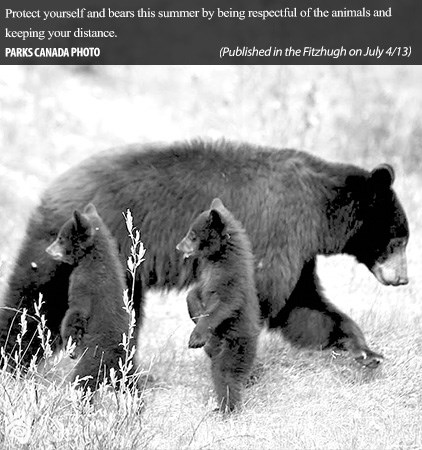 Bears in the backyard
Bears in the backyard
While grizzlies head to higher elevations for the summer, away from the park’s highest human use areas, black bears can often be found right in the thick of things throughout the season. Seeing a black bear in the wild is part of the incredible Jasper experience and they are commonly seen around some of the parks busiest areas. Unfortunately, this close proximity to people also puts these bears at greater risk. Please help us protect our bears this summer.
Never feed a bear. The old saying, “a fed bear is a dead bear” remains true as bears that become habituated or dependent upon human food become a danger to the public and may in some cases have to be destroyed. You can protect bears in Jasper: remove or secure all bear attractants whether in the town site or while enjoying the park—this includes grease bins, compost, recycling, garbage, fruit trees (pick fruit), ornamental berry bushes and even bird feeders.
Bears feeding along roadsides are at risk of being struck on the road. Respect speed limits in the park and if you see a bear, consider not stopping. If you do stop, always think of safety for the bear, for you, and for other people. Pull well over on the side of the road, use hazard lights to alert other drivers and stay in your vehicle to observe and photograph the bear.
Jasper is very fortunate to have amazing wildlife viewing opportunities. With nearly two million visitors a year and over 5,000 residents, it takes a conscious effort from each of us to make sure we don’t harm the very thing that makes Jasper National Park special: its wild nature.
